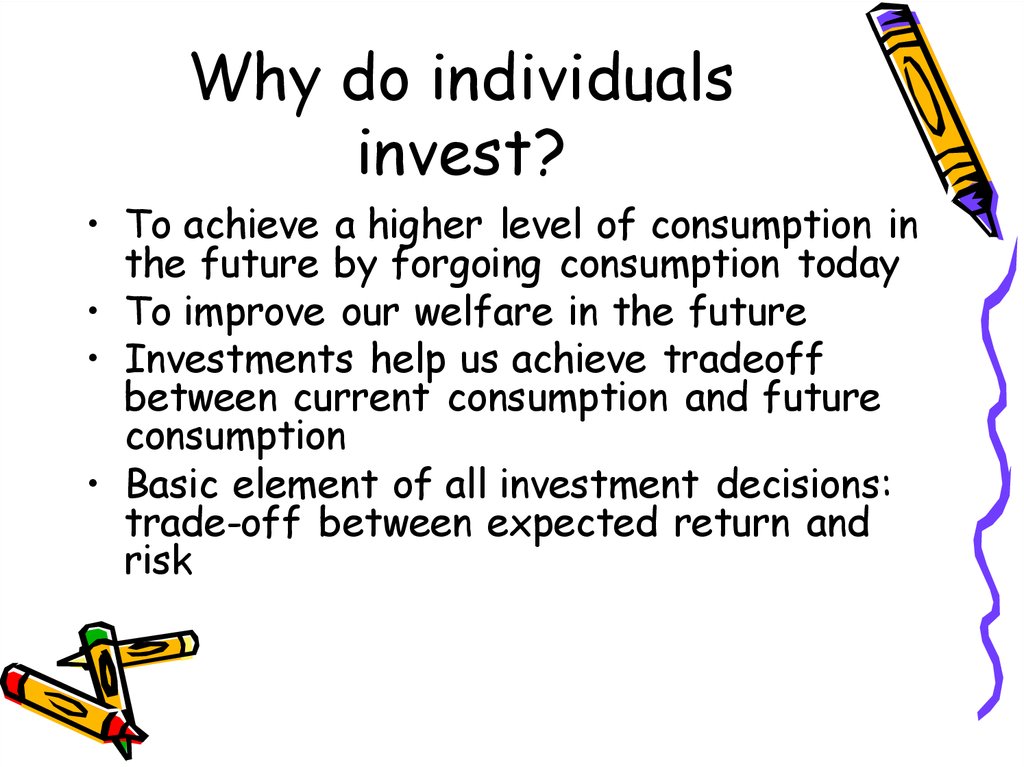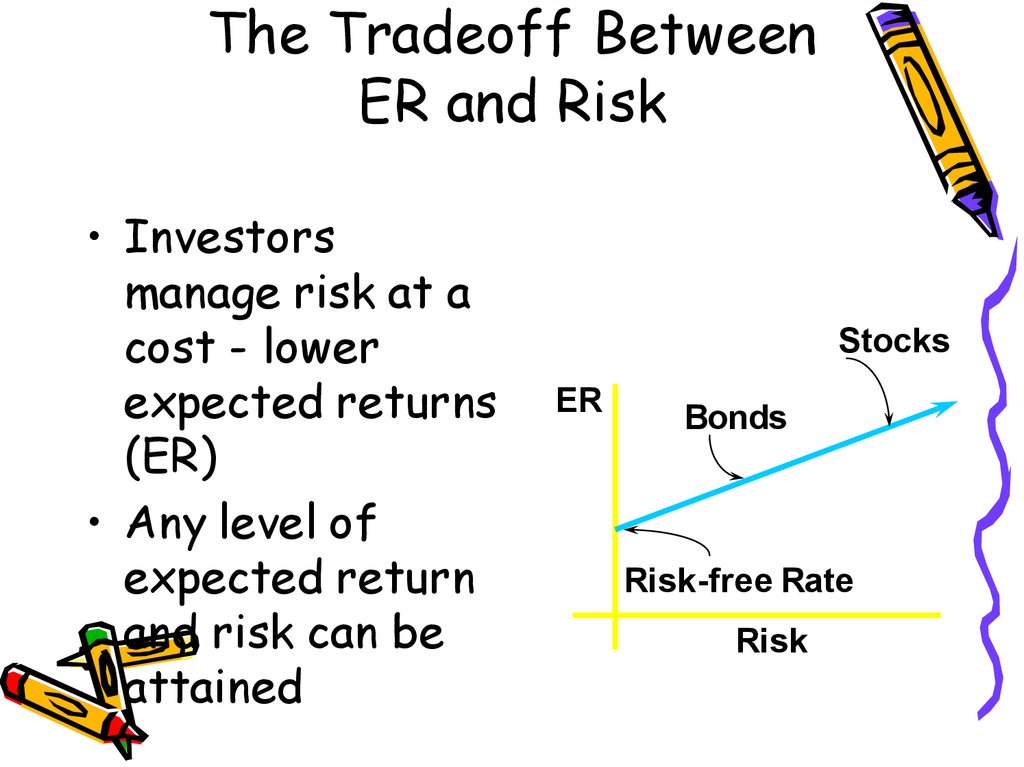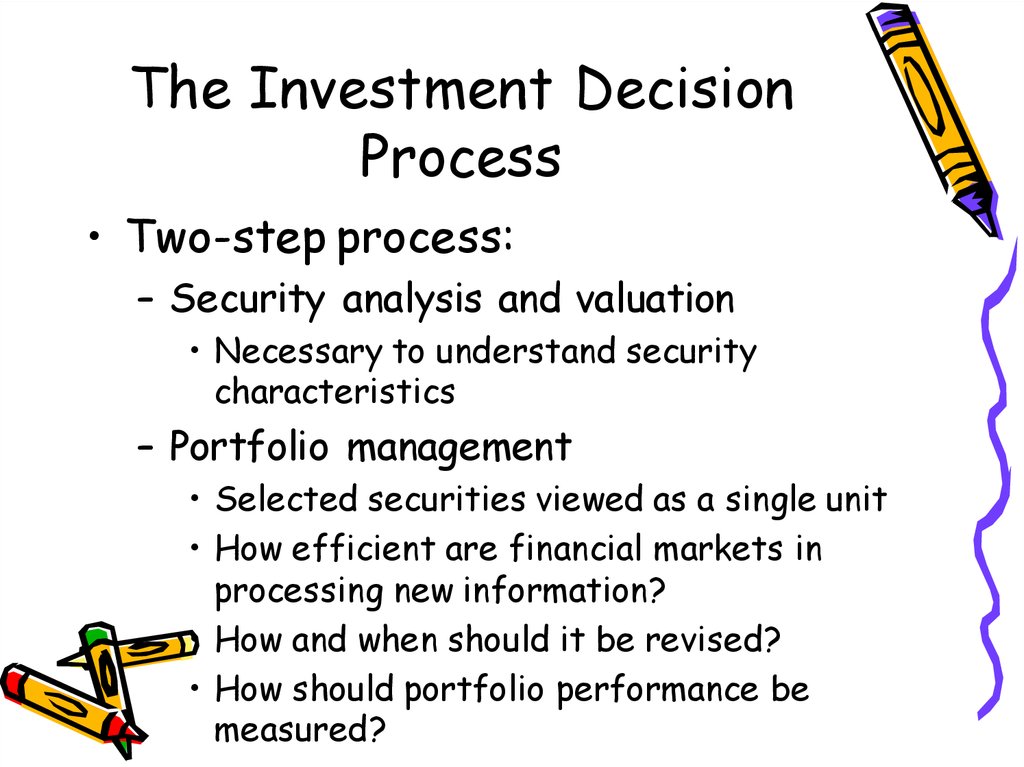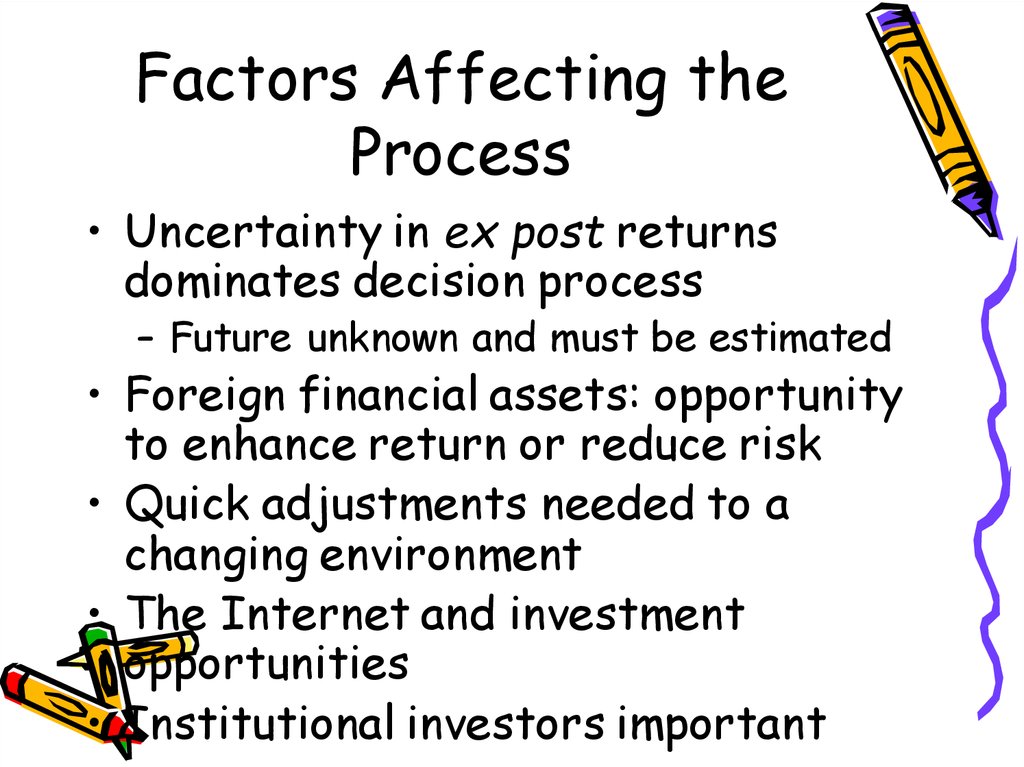Похожие презентации:
Introduction to Investments (Chapter 1)
1. Introduction to Investments (Chapter 1)
B 6612. Meaning of Investments
• Commitment of money that is expected togenerate additional money
• Current commitment of dollars for a
period of time to desire future payments
that will compensate the investor for
– The time the funds are committed
– The expected rate of inflation, and
– The uncertainty of the future payments
• The investor can can be an individual, a
government, and/or a corporation
3. Why do individuals invest?
• To achieve a higher level of consumption inthe future by forgoing consumption today
• To improve our welfare in the future
• Investments help us achieve tradeoff
between current consumption and future
consumption
• Basic element of all investment decisions:
trade-off between expected return and
risk
4. Why Study Investments?
• The Personal Aspects– To earn better returns in relation to the risk
we assume when we invest
– Knowledge of investments help investors
understand the relationship between risk and
return
• Investment as a Profession
– To become a licensed broker (series 7 exam),
to become CFA/CFP/CMA, knowledge of
investments is needed
5. Investment Decisions
• Underlying investment decisions: thetradeoff between expected return
and risk
– Expected return is not usually the same
as realized return
• Risk: the possibility that the realized
return will be different than the
expected return
6. The Tradeoff Between ER and Risk
• Investorsmanage risk at a
cost - lower
expected returns
(ER)
• Any level of
expected return
and risk can be
attained
Stocks
ER
Bonds
Risk-free Rate
Risk
7. The Investment Decision Process
• Two-step process:– Security analysis and valuation
• Necessary to understand security
characteristics
– Portfolio management
• Selected securities viewed as a single unit
• How efficient are financial markets in
processing new information?
• How and when should it be revised?
• How should portfolio performance be
measured?
8. Factors Affecting the Process
• Uncertainty in ex post returnsdominates decision process
– Future unknown and must be estimated
• Foreign financial assets: opportunity
to enhance return or reduce risk
• Quick adjustments needed to a
changing environment
• The Internet and investment
opportunities
• Institutional investors important
9. Sources of Risk
Interest Rate Risk
Purchasing Power Risk
Bull-Bear Market Risk
Default Risk
Liquidity Risk
Callability Risk
Convertibility Risk
Political Risk









 Экономика
Экономика








